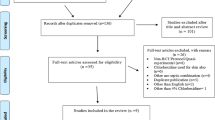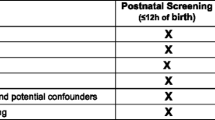Abstract
The application of olive oil is one of the traditional practices used in umbilical cord care in Turkey. The study was conducted experimentally, so as to compare microbiologically the efficacy of olive oil use and keeping the stump dry. Data were obtained using a personal information form and an omphalitis follow-up form, as well as from cultures taken from the infants’ umbilical cords. Cultures were taken from the neonates’ umbilical cords at three different times. The Pearson chi-square test, student t test, percentages, and averages were used for statistical data analysis. The average time for separation is 9.46 days. For the control group, this period is 9.8 days, while for the study group, it is 9.1, lacking a statistically significant difference between the two groups (P > 0.05). However, when the cut-off point for umbilical cord detachment is set at 10 days, the cords of 71.6% of the neonates in the study group, compared with 55.6% of the control group, are observed to have separated before 10 days, representing a significant difference between the groups (P < 0.05). In all of the cultures collected, growth was noted in 35.9% of the study group and 33.3% of the control group. The correlation between the method used for the care of the cord and the total culture results was not statistically significant (P > 0.05). Olive oil can be used in the umbilical cord care of neonates under appropriate conditions; we recommended that this investigation be repeated on expanded sample groups.
Similar content being viewed by others
References
World Health Organization (1998). Care of the umbilical cord: A review of the evidence. Geneva.
Darmstadt, G. L., & Dinulos, J. G. (2000). Newborn skin care. Pediatric Clinics of North America, 47(4), 757–782.
Dore, S., Buchan, D., Couls, S., Hamber, L., Stewart, M., Cowan, D., et al. (1998). Alcohol versus natural drying for newborn cord care. Journal of Obstetric, Gynecologic, and Neonatal Nursing, 27(6), 621–627.
Gladstone, I. M., Clapper, L., Thorp, J. W., & Wright, D. I. (1988). Randomized study of six umbilical cord care regimens. Comparing length of attachment, microbial control, and satisfaction. Clinical Pediatrics, 27(3), 127–129.
Mullany, L. C., Darmstadt, G. L., Khatry, S. K., LeClerg, S. C., Katz, J., & Tielsch, J. M. (2006). Impact of umbilical cord cleansing with 4.0% chlorhexidine on time to cord separation among newborns in southern Nepal: A cluster-randomized, community- based trial. Pediatrics, 118(5), 1864–1871.
Pezzati, M., Biagioli, E. C., Martelli, E., Gambi, B., Biagiotti, R., & Rubaltelli, F. F. (2002). Umbilical cord care: The effect of eight different cord-care regimens on cord separation time and other outcomes. Biology of the Neonate, 81(1), 38–44.
Zupan, J., Garner, P., & Omari, A.A. (2004). Topical umbilical cord care at birth. Cochrane Database of Systematic Reviews, Issue 3. Art. No.: CD001057. DOI: 10.1002/14651858.CD001057.pub2.
Kul, M., Gürsel, O., Gülgün, M., Kesik, V., Sarıcı, S. Ü., & Alpay, F. (2005). Sağlıklı term yenidoğanlarda farklı göbek bakımı uygulamalarının göbek düşme zamanı ve diğer klinik sonuçlar üzerine etkilerinin değerlendirilmesi. Türk Pediatri Arşivi, 40(3), 227–231.
Siegfried, E., & Shah, P. (1999). Skin care practices in the neonatal nursery: a clinical survey. Journal of Perinatology, 19(1), 31–39.
Janssen, P., Selwood, B. L., Dobson, S. R., Peacock, D., & Thiessen, P. N. (2003). To dye or not to dye: A randomized, clinical trial of a triple dye/alcohol regime versus dry cord care. Pediatrics, 111(1), 15–20.
Panyavudhikrai, S., Danchaivijitr, S., Vantanasiri, C., Trakulsomboon, S., Kolatat, T., Dhiraputra, C., et al. (2002). Antiseptics for preventing omphalitis. Journal of the Medical Association of Thailand, 85(2), 229–234.
Vural, G., & Kisa, S. (2006). Umbilical cord care: a pilot study comparing topical human milk, povidone-iodine, and dry care. Journal of Obstetric, Gynecologic, and Neonatal Nursing, 35(1), 123–128.
Mullany, L. C., Faillace, S., Tielsch, J. M., Stoltzfus, R. J., Nygaard, K. E., Kavle, J. A., et al. (2009). Incidence and risk factors for newborn umbilical cord infections on Pemba Island, Zanzibar, Tanzania. The Pediatric Infectious Disease Journal, 28(6), 503–509.
Kubo, A., Lunde, C. S., & Kubo, I. (1995). Antimicrobial activity of the olive oil flavor compounds. Journal of Agricultural and Food Chemistry, 43(6), 1629–1633.
Hafner-Eaton, C. (1997). Breast yeast. Midwifery Today and Childbirth Education, 42(3), 37.
Krampf, L. (1996). Baby your baby’s skin. Delicious! Your Magazine of Natural Living, 12(9), 66–68.
Brent, N., Rudy, S. J., Redd, B., Rudy, T. E., & Roth, L. A. (1998). Sore nipples in breastfeeding women: A clinical trial of wound dressings vs. conventional care. Archives of Pediatric Adolescent Medicine, 152(11), 1077–1082.
Al-Waili, N. S., Saloom, K. S., Al-Waili, T. N., & Al-Waili, A. N. (2006). The safety and efficacy of a mixture of honey, olive oil, and beeswax for the management of hemorrhoids and anal fissure: a pilot study. The Scientific World Journal, 2(6), 1998–2005.
Stoukides, C. (1993). The galactopharmacopedia: Topical medications and breastfeeding. Journal of Human Lactation, 9(3), 185–187.
Ekici, B., Ergin, A. B., & Şahiner, P. (2007). Yenidoğanların göbek bakiminda kullanilan yöntemlerin etkinliğinin karşilaştırılması. Çalışma Çocuk Dergisi, 7(3), 191–196.
Brook, I. (1998). Microbiology of necrotizing fasciitis associated with ompholitis in the newborn infant. Journal of Perinatology, 18(1), 28–30.
Mullany, L. C., Darmstadt, G. L., Katz, J., Khatry, S. K., LeClerq, S. C., Adhikari, R. K., et al. (2009). Risk of mortality subsequent to umbilical cord infection among newborns of southern nepal: Cord infection and mortality. The Pediatric Infectious Disease Journal, 28(1), 17–20.
Hacettepe University Institute of Population Studies. (2003). Turkey demographic and health survey 2003. Turkey: Ankara.
Medina, E., de Castro, A., Romero, C., & Brenes, M. (2006). Comparison of the concentrations of phenolic compounds in olive oils and other plant oils: Correlation with antimicrobial activity. Journal of Agricultural and Food Chemistry, 54, 4954–4961.
Tripoli, E., Giammanco, M., Tabacchi, G., Di Majo, D., Giammanco, S., & La Guardia, M. (2005). The phenolic compounds of olive oil: Structure, biological activity and beneficial effects on human health. Nutrition Research Reviews, 18, 98–112.
Kiechl-Kohlendorfer, U., Berger, C., & Inzinger, R. (2008). The effect of daily treatment with an olive oil/lanolin emollient on skin integrity in preterm infants: A randomized controlled trial. Pediatric Dermatology, 25(2), 174–178.
Acknowledgments
The study has supported by The Unit of Academic Studies Projects of Gazi University.
Conflict of interest statement
This study has supported as financial by The Unit of Academic Studies Projects of Gazi University. By this financial support; materials of culture and umblical cord care have brought and investigators cost of transports have been met.
Author information
Authors and Affiliations
Corresponding author
Rights and permissions
About this article
Cite this article
Şentürk Erenel, A., Vural, G., Yaman Efe, Ş. et al. Comparison of Olive Oil and Dry-Clean Keeping Methods in Umbilical Cord Care as Microbiological. Matern Child Health J 14, 999–1004 (2010). https://doi.org/10.1007/s10995-009-0536-4
Published:
Issue Date:
DOI: https://doi.org/10.1007/s10995-009-0536-4




